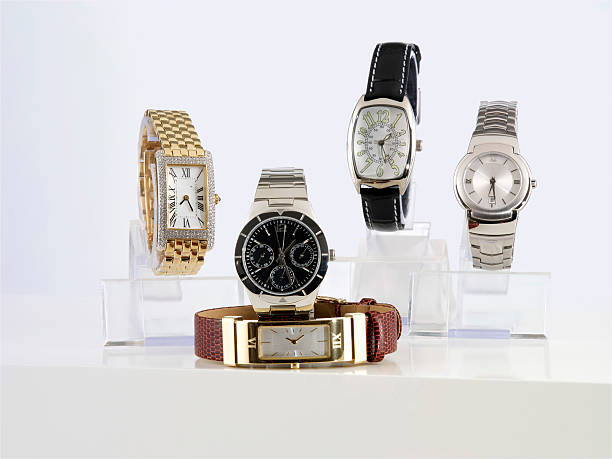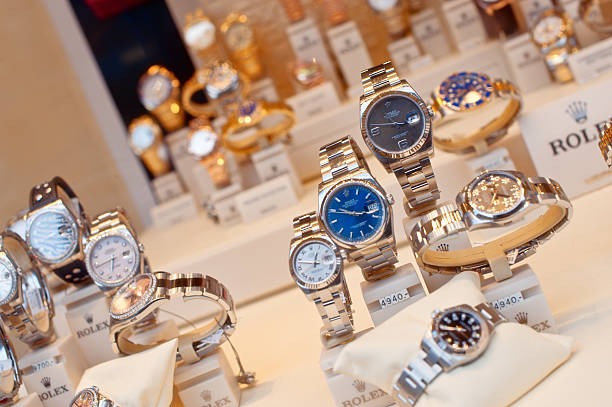Introduction to Luxury Timepieces
Watches of the luxury variety are supposed to tell time, certainly. But, arguably more importantly, they serve to embody status, artistry and technology – rolled into one very, very costly and rather glittering snob appeal. The most expensive wristwatch in the world is simply… the finest, in its own unique way.
What Makes a Watch So Expensive?
The main factors that account for the high price of very expensive watches, are the use of precious materials (for example platinum, gold and diamonds), the incredibly detailed movements of the watch, the fact that sometimes they are collected in small series, the name of the brand worried about the quality of its products and the history and preservation value of the watch.
Use of Precious Materials
It is the rarest or priciest material incorporated into its constitution – the diamond-studded dial, the sapphire glass, the hand-made platinum or gold case – that contributes to its aesthetic and monetary value.
Craftsmanship and Expertise
But there are so few master watchmakers in the world and all the wizardry of these watches’ fine mechanisms take hundreds of hours to create – a watch is a machine made with passion and a keen human touch, and once you understand that, you can focus on what you’re looking for and admire it in the right way.
The Most Expensive Watch: A Class of Its Own
The most expensive wristwatch ever sold at auction was the Patek Philippe Grandmaster Chime. This incredible masterpiece sold for over $31 million, setting a record in the watch industry. What makes it stand out?
The Patek Philippe Grandmaster Chime
Released in 2014, the Patek Philippe Grandmaster Chime was designed to commemorate the company’s 175th anniversary. With 20 complications, it is one of the most complex wristwatches ever made. It features two dials, front and back, and is composed of over 1,366 individual components. Its case is made of 18-carat rose gold, and it comes with reversible functionality, allowing it to be worn on either side.
Why Collectors Value Such Pieces
Owning the world’s most expensive wristwatch is not just about flaunting wealth. For collectors, it’s about owning a piece of horological history. These watches often appreciate over time, making them a valuable investment.
Limited Editions and Rarity
Many of these watches are produced in extremely limited quantities, making them even more desirable. The scarcity drives up demand, and for collectors, securing one of these pieces can be a significant achievement.
The Intricate Mechanics Behind Luxury Watches
One of the most fascinating aspects of the world’s most expensive wristwatches is the intricate mechanics behind them. These timepieces often include complications, such as perpetual calendars, minute repeaters, and tourbillons. These features showcase the watchmaker’s skill and attention to detail. Every tiny gear, spring, and lever must work together seamlessly, requiring the highest level of precision. The result is a timepiece that not only tells time but also pushes the boundaries of mechanical engineering.
The Role of Heritage and Brand Legacy
The brand behind the watch also plays a crucial role in its value. Renowned names like Patek Philippe, Rolex, and Audemars Piguet have built a legacy over centuries, becoming synonymous with excellence in watchmaking.

Owning a watch from one of these brands means more than just buying a product; it’s about owning a piece of that brand’s rich history. These companies maintain their exclusivity by producing limited-edition pieces and ensuring each watch meets the highest standards of quality.
Customization and Personalization
Another key factor that adds to the price of luxury watches is the option for customization. High-end brands often offer their clients the ability to personalize their watches. From choosing specific gemstones to engraving a personal message, this bespoke experience allows owners to create a unique piece that reflects their individual tastes. Customization makes the watch even more exclusive, increasing its emotional and financial value.
The Impact of Auctions on Watch Prices
Auction houses such as Christie’s and Sotheby’s play a significant role in setting record-breaking prices for luxury watches. The auction environment creates a competitive atmosphere where collectors are willing to pay top dollar for a rare or historic timepiece.
The bidding process often drives prices far beyond their initial estimates, and the prestige of purchasing a watch at a high-profile auction adds to its allure. The combination of scarcity, demand, and historical significance often results in staggering final prices.
Future Trends in Luxury Watch Collecting
As technology advances, the luxury watch market continues to evolve. While smartwatches have gained popularity in recent years, they have not diminished the appeal of traditional mechanical watches. In fact, collectors increasingly value the craftsmanship and longevity of classic timepieces.
Future trends may see an even greater focus on sustainability, with brands exploring eco-friendly materials and production methods. However, the demand for rare, handcrafted watches with intricate complications is unlikely to fade, ensuring that these masterpieces continue to hold their place in the world of luxury.
Conclusion: A Legacy of Opulence
The world’s most expensive wristwatch is more than just a luxury item. It represents the height of human ingenuity, design, and craftsmanship. For those lucky enough to own one, it’s not just about telling time—it’s about owning a piece of history.

